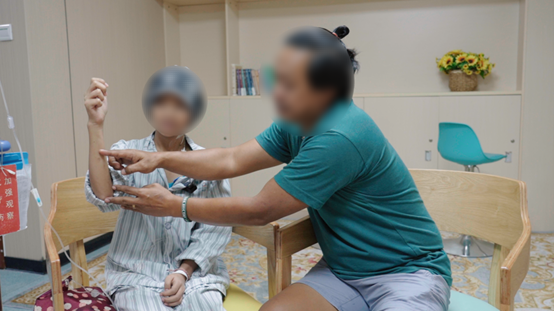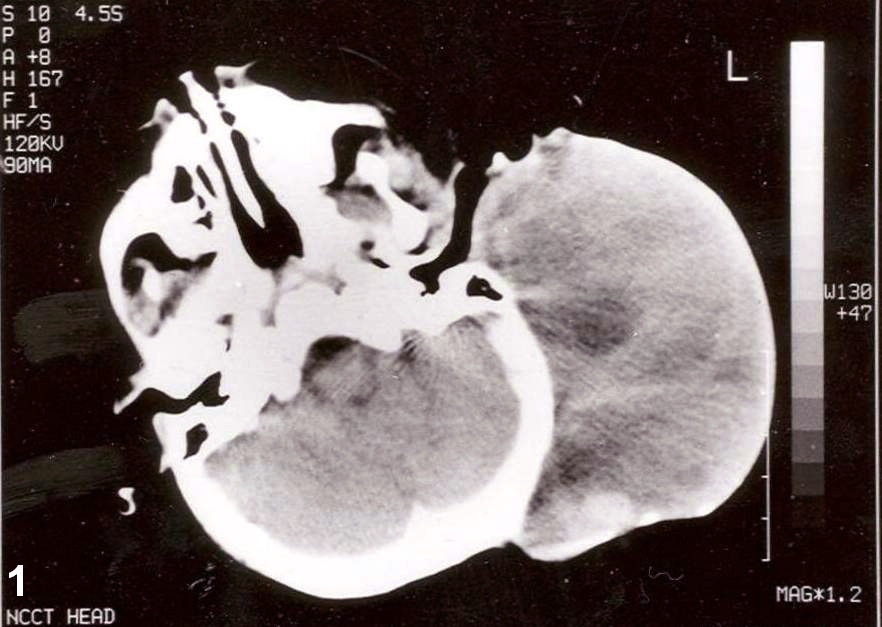For Kelly (alias), a young girl from the Philippines, her childhood was overshadowed by a complicated yet devastating diagnosis—embryonal rhabdomyosarcoma. This wasn’t just a cold medical term on a report; it represented the immense suffering her small body had to endure—37 rounds of systemic chemotherapy and 28 sessions of radiotherapy.
When the brief remission was shattered by a relentless recurrence, Kelly and her family were once again plunged into despair. Yet despite the pain and hardship, her bright eyes still held a beautiful vision for the future.
A Small Lump Turned into a Malignant Threat
“It’s really been so hard.” These were the words Kelly’s uncle repeated most during the interview—revealing the agony of this long battle.
Rewind to early 2022, when Kelly was just 11 years old. She discovered a small lump on her right forearm and thought it was just a mosquito bite. Her parents also dismissed it as a minor bump. It wasn’t until a family gathering that her uncle noticed the lump was growing. Alarmed, he immediately urged her parents to take her to the hospital.
The diagnosis hit like a bolt of lightning:
“Stage IV malignant tumor—embryonal rhabdomyosarcoma of the right forearm, with multiple nodules in both lungs and enlarged lymph nodes near the abdominal aorta and retroperitoneal area, suggesting metastasis.”
Her uncle still recalls that “tiny” lump with regret. Had they acted earlier—could the outcome have been different?
Tumor Returns After 37 Chemotherapies and 28 Radiations
Kelly began chemotherapy every two weeks, each session lasting two hours. Repeated needle insertions severely damaged her veins. The medication caused painful side effects—mouth ulcers, headaches, and skin darkening—that tormented her young body.
Fortunately, early treatment was effective. The tumor shrank, and after 37 chemotherapy sessions and 28 radiotherapy sessions, a PET-CT scan showed no tumors throughout her body.
But nine months later, the cancer returned. Watching their daughter suffer in bed, Kelly’s father was heartbroken. When the doctor calmly said her “survival rate was less than 20%,” the once-strong father could no longer hold back his tears.
A Spark of Hope From a Friend’s Experience
Just when the door of fate seemed to close, a glimmer of hope emerged. A friend who had successfully battled breast cancer at Fuda Cancer Hospital in Guangzhou shared her story.
This testimony was like a spark in the night—it reignited hope in Kelly’s father and uncle. It was as if they had grabbed onto a lifeline in rough waters. After careful consultation and deliberation, they made the bold decision to bring Kelly to Fuda Cancer Hospital in China for a last fight for her life.
Upon admission, Kelly had multiple nodules in the lower right humerus and distal forearm/wrist. There were multiple lung metastases and a tumor about 9cm x 8cm in her right armpit. She also experienced limited extension of her ring and pinky fingers on her right hand.

Rhabdomyosarcoma is most common in children and requires a multimodal treatment approach. Chemotherapy is a cornerstone, especially for non-pleomorphic subtypes like embryonal and alveolar types, which are highly responsive to it—but the regimens must be optimized to minimize suffering.
Targeted Therapy + Arterial Infusion Chemotherapy Shrinks Tumor
After a thorough multidisciplinary evaluation, the medical team at Department II of Fuda decided to administer targeted therapy combined with arterial infusion chemotherapy. Unlike traditional intravenous chemo, this approach delivers drugs directly into the tumor’s feeding artery under imaging guidance.
Interventional radiologists use catheters to precisely insert the chemo drugs directly into the tumor. This technique maximizes drug concentration in the tumor while minimizing exposure to vital organs like the heart, brain, and kidneys—greatly reducing side effects.
“This infusion chemo only took 30 minutes!” Kelly’s uncle expressed his satisfaction. Compared to the painful two-hour sessions before, this was a drastic improvement.
Just two days after the first treatment, Kelly was amazed to find the tumor on her arm had shrunk and softened—a very positive sign. During her next check-up, the mass on her arm had almost flattened completely.
Even more encouraging, her latest scans showed no visible tumors in both lungs and right pleura, and the enlarged right armpit lymph nodes had significantly reduced. The previously planned radioactive seed implantation was no longer necessary.
All this compelling evidence pointed to one fact: the current treatment was working. They had finally grasped that precious window of opportunity—and with it, a chance to save her life.
A Beacon of Hope in a Foreign "Home"
“This place feels like our home in China.”Their time at Fuda, though brief and medical in nature, brought warmth and comfort. The attentive healthcare team, the accessible facilities, and the family-like care have left deep impressions on Kelly and her uncle.
Fuda has become more than just a hospital—it’s a comforting haven for them in a foreign land. In this special "home," Kelly’s dreams of a brighter future are once again taking shape—brighter and more steadfast than ever before.
